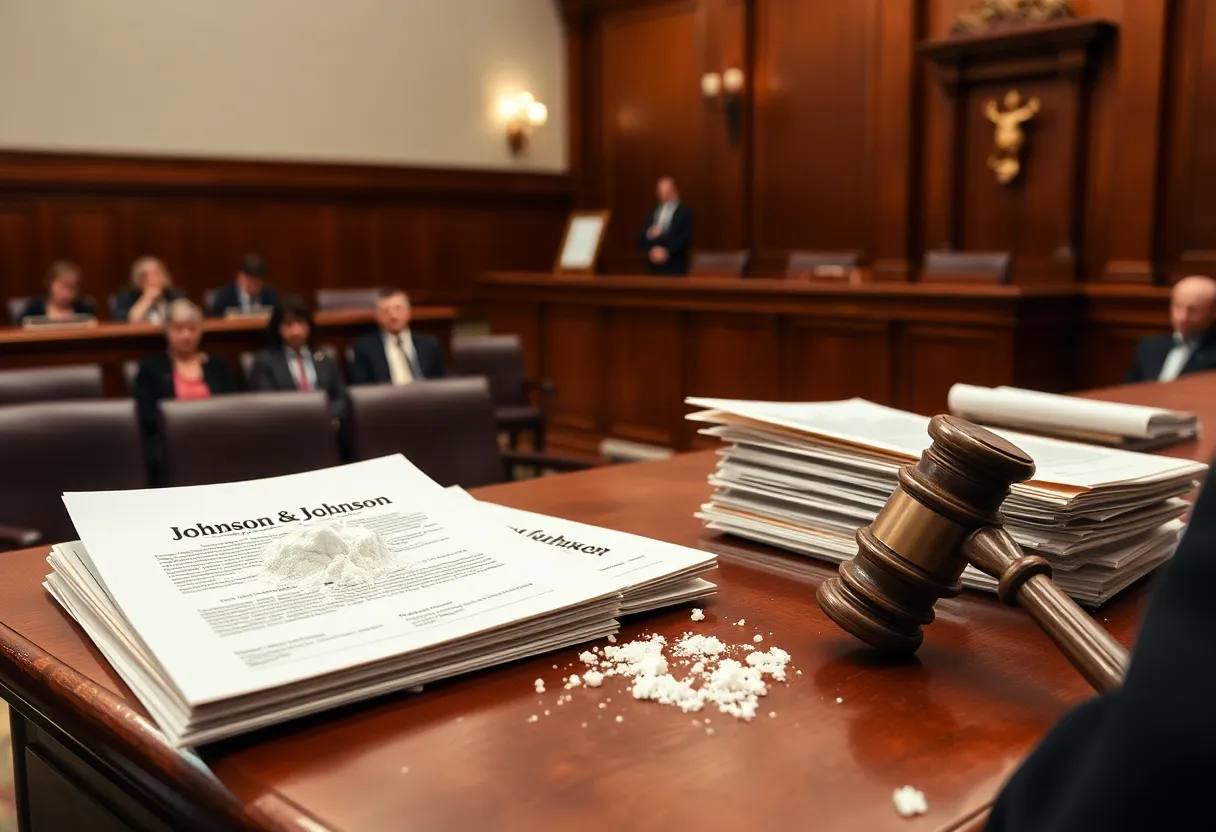News Summary
Johnson & Johnson faces ongoing legal challenges due to asbestos contamination in its talcum powder, with significant lawsuits and settlement attempts.
Legal Turmoil Surrounding Johnson & Johnson’s Talcum Powder: The Ongoing Asbestos Crisis
The saga continues for Johnson & Johnson (J&J) as the company grapples with mounting legal challenges related to its infamous talcum baby powder, a product they have sold since 1894. Controversy has erupted over claims that the talc used in these powders has been contaminated with asbestos, a mineral known to cause mesothelioma and various forms of cancer. As the company faces tens of thousands of lawsuits, the implications for consumers, current users, and the healthcare sector grow increasingly troubling.
The Deadly Link Between Talc and Asbestos
Talc is a commonly used mineral in many personal care products, including baby powder. However, the mining process can render it susceptible to contamination by asbestos, which raises alarms regarding the safety of its long-time use. Numerous studies have indicated that J&J’s talc products may contain traces of asbestos, leading many individuals who have been diagnosed with cancer to link their health issues directly to long-term use of this seemingly innocent product.
A Wave of Lawsuits
The first lawsuit against J&J regarding asbestos in talcum powder was filed back in 2009, igniting a legal wildfire that has resulted in billions of dollars in claims against the company. Many victims have successfully sued J&J, resulting in significant verdicts such as the $260 million awarded to an Oregon woman who used J&J’s baby powder for over 30 years and developed mesothelioma. Despite these outcomes, J&J has maintained its stance that their talc products are safe, a position that becomes increasingly questionable in light of extensive evidence revealing their knowledge of the risks as early as 1957.
A Tentative Settlement and Its Consequences
In a bid to resolve ongoing claims, J&J reached a tentative settlement with 43 state attorneys general in 2024, agreeing to pay approximately $700 million while simultaneously admitting no wrongdoing regarding the risks associated with talc. This settlement protects J&J from future lawsuits over these claims, but criticisms arise questioning whether the amount is sufficient compensation for the victims involved. In a separate case, a family in Illinois received a $45 million award for a mesothelioma-related lawsuit against J&J and its subsidiary, Kenvue Inc.
Bankruptcy Attempts and Ongoing Battles
The legal crisis worsened with J&J’s failed attempts to undergo a “Texas two-step” strategy to limit its liabilities by splitting up into entities, with one attempting to absorb all asbestos claims and seek bankruptcy protection. These attempts were thwarted by both a federal judge and appeals court, adding to J&J’s woes. Amid such errors, a newly formed subsidiary, Red River Talc, filed for bankruptcy in Texas, dealing with around 62,000 talc lawsuits.
Compensation Battles: Reality for Victims
As J&J attempts to settle its talc lawsuit issues, the prospective compensation for victims remains murky, with payouts potentially ranging from five to six figures. J&J’s proposed global settlement offer has significantly increased to around $8 billion. Nevertheless, for the plan to move forward, at least 75% of plaintiffs need to agree, which remains uncertain as a judge expressed skepticism over J&J’s claimed support among litigants.
Ongoing Legal Challenges
The company’s troubles do not stop with talcum powder. J&J is also embroiled in legal challenges related to ovarian cancer, with many claims linking it to talc products. This expansive legal landscape includes lawsuits across various jurisdictions, including a large group action in the United Kingdom involving 3,500 claimants. Meanwhile, J&J asserts that they are being unjustly targeted while reiterating their position on the safety of their talc-based products.
The Future of Talc Products
In an effort to distance itself from the growing negative spotlight, J&J halted sales of talc-based baby powder globally in 2023, transitioning towards a cornstarch alternative. This decision was prompted after ongoing disclosures that their products had been tested and found to contain asbestos from 1971 to early 2000s, which were not reported to the FDA. While J&J continues to defend its practices, the overarching question remains: how many lives must be tarnished before the truth about talc products is fully unveiled?
Deeper Dive: News & Info About This Topic
HERE Resources
Groundbreaking Breakthrough for Mesothelioma Treatment
Teacher Battles Mesothelioma After Asbestos Exposure in Schools
Mesothelioma Insights from 2025 Survey Reveal Hope Within Challenges
Family Seeks Answers After Asbestos Exposure Death
Altrad Services Reports Impressive Financial Growth Amidst Challenges
Asbestos Discovery Causes Delays in Cirencester Roadworks
Altrad Services Reports Robust Financial Growth Despite Asbestos Challenges
The Asbestos Roof Removal Case: High-Profile Political Drama Unfolds in the Bloemfontein High Court
High-Stakes Asbestos Trial Resumes Amid Legal Twists in Bloemfontein
Asbestos Corruption Case Delayed: Court Awaits Crucial Ruling
Additional Resources
- Asbestos.com: Johnson & Johnson Targets Mesothelioma Expert
- Wikipedia: Mesothelioma
- Courthouse News: Johnson & Johnson Investors Defend Class Action
- Google Search: Johnson and Johnson talcum powder
- The Guardian: Johnson & Johnson UK Lawsuit on Talcum Powder
- Encyclopedia Britannica: Asbestos
- New York Times: Johnson & Johnson Bankruptcy Over Talc
- Google Scholar: Johnson and Johnson asbestos talc



















